Women’s Six Nations team of the Championship
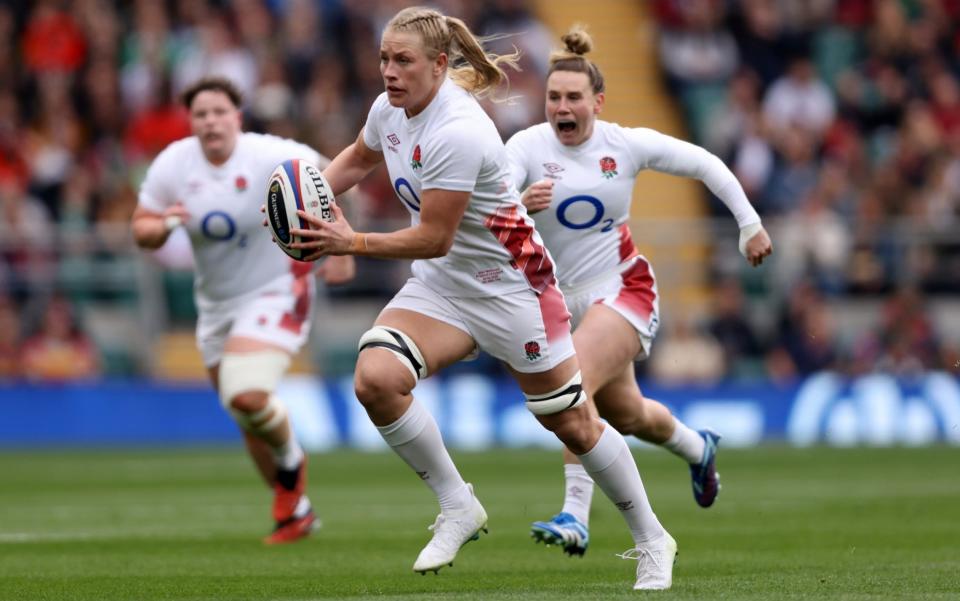
After securing a sixth consecutive title and third Grand Slam in as many years, England are in a league of their own in the Women’s Six Nations.
Even if their duel in Bordeaux seemed closer than the 42-21 scoreline suggested, it is no longer a two-horse race at the top.
This year’s championship saw a markedly improved Ireland side that jumped up the table to finish third to qualify for next year’s World Cup and an under-performing Wales outfit who salvaged some pride against Italy but still ended up bottom of the table.
Scotland (fourth) and Italy (fifth) showed glimpses of development but instead of growing into the championship, plateaued somewhat.
Here is Telegraph Sport’s team of the Women’s Six Nations:
15. Ellie Kildunne (England)
The Red Roses back-line was poetry in motion and Kildunne was at the heart of everything. Her tally of nine tries made her the tournament’s top scorer and she scooped up a trio of player of the match accolades along the way. Her ability to tear apart defences with her balanced running game was breathtaking. She made a historic 351 metres and six line breaks in the Red Roses 88-10 rout over Ireland, the highest tally by any player in a women’s Test match this decade.
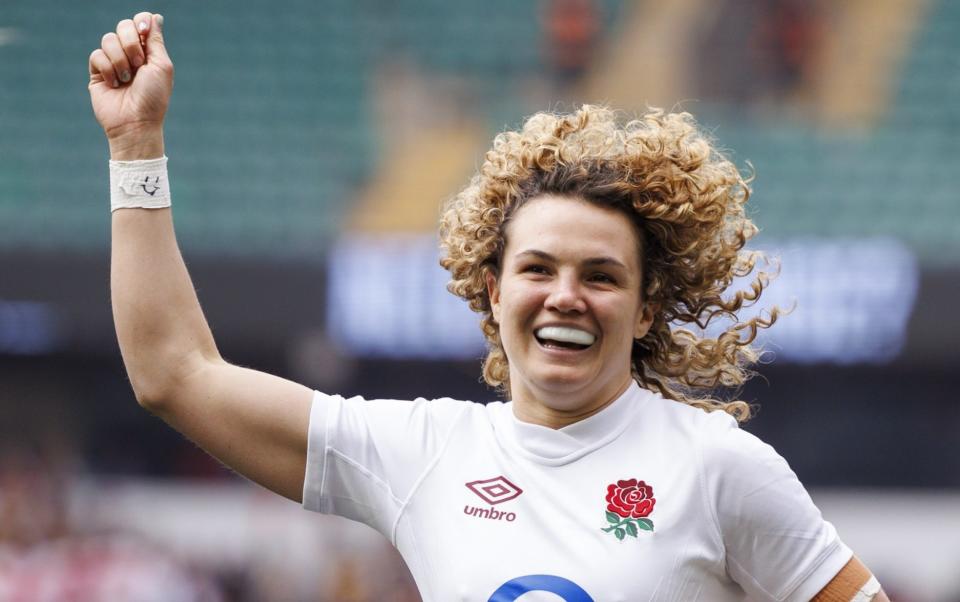
14. Alyssa D’Inca (Italy)
A real livewire in an Italy back-line that showed dexterity in attack but were found wanting in pressure moments. D’Inca underlined her pace against France when she skipped down the touchline to score but she has added a kick-chase to her game which caused all sorts of problems. Deployed at both outside centre and on the wing, she is fast becoming one of the most valuable utility backs on the women’s scene.
13. Meg Jones (England)
Who else? Jones enjoyed a standout tournament and was a bundle of energy in England’s sparkling midfield. Her telepathy with Tatyana Heard and Holly Aitchison – cutting all sorts of dummy attacking lines that outfoxed opposition defences – was sublime, while her defensive work-rate was on another level. A truly remarkable competitor.
12. Tatyana Heard (England)
Heard came into the championship under pressure from Emily Scarratt, who had been challenged to convert to inside centre by John Mitchell, but in reality her position never looked under threat. A direct strike-runner and combative in contact, not to mention her polished pull-backs to Aitchison that kept defences guessing, she took England’s attack to new heights.
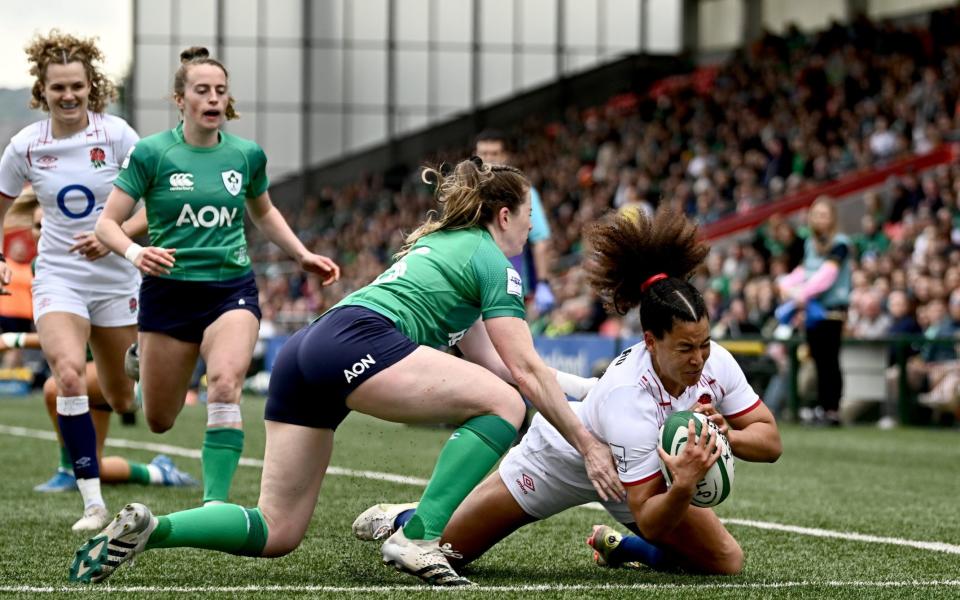
11. Marine Ménager (France)
Ménager stood out in an underwhelming French back-line that was supposed to be strengthened by an influx of sevens stars. This tried and tested tactic is one that has been used for years in the women’s XVs game but is becoming increasingly difficult to justify given the rate at which the XVs game has progressed. Les Bleues found this out but Ménager – scorer of two tries in her side’s defeat by England – was their one attacking threat who really shone.
10. Dannah O’Brien (Ireland)
The best fly-half Ireland have produced in a generation – and she is still only 20. This is harsh on Holly Aitchison, whose place kicking was perfect against France and proved key for England in the territory battle. But O’Brien squeaks in for the way in which she drove a much improved Ireland side around the park.
9. Pauline Bourdon Sansus (France)
Bourdon Sansus orchestrated much of France’s attack and has one of the sharpest minds. She is probably the closest France have when it comes to mimicking England’s intensity and intuition. Her link-up play with Ménager caused teams all sorts of issues and her no-look pass that put the winger through a gap against Ireland was joyous.
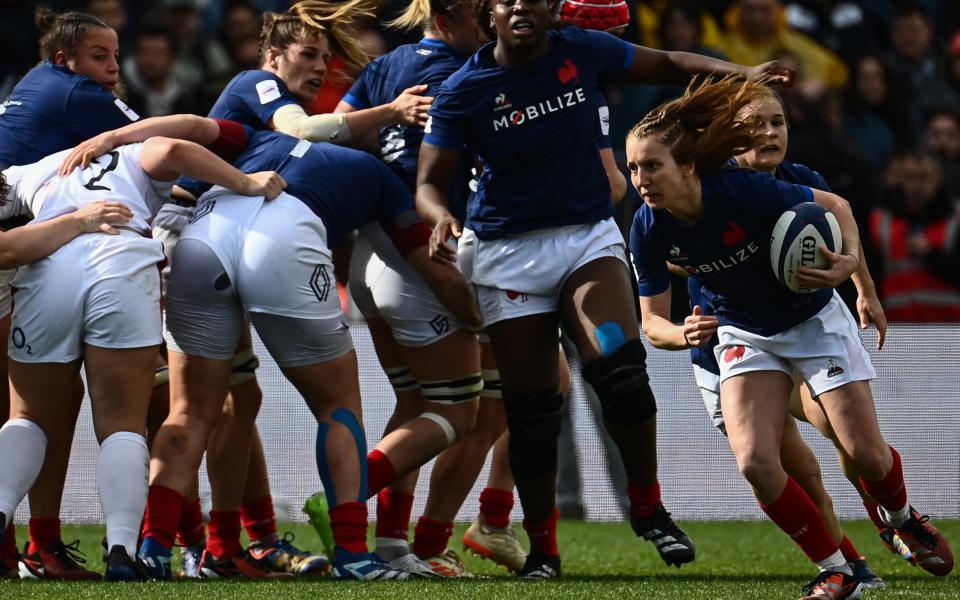
1. Hannah Botterman (England)
The Red Roses rampaging loosehead is in a league of her own. Botterrman spent years as an understudy to Vickii Cornborough but has steered England’s pack to even greater heights and looks more conditioned than she did in her formative years. One of those rare props who can go the full 80 minutes, too.
2. Neve Jones (Ireland)
Ireland’s line-out still needs work, but Jones’s work-rate in the loose was outstanding. She was one of Ireland’s most influential players in their momentum-boosting victory over Wales and embodied a side that has answered questions over its defensive capabilities. She did well to retain her starting spot despite the noise around Cliodhna Moloney’s shock return to the squad halfway through the campaign.
3. Maud Muir (England)
Muir was an unpolished gem when she came on the scene a few seasons ago during the Simon Middleton era. She had big shoes to fill in light of Sarah Bern’s absence but wow, did she fill them. She lacks Bern’s pace but gets through a lot of unseen work. The scrum penalty she won early doors against France helped the Red Roses settle into their groove and it set the tone for a fine individual display.
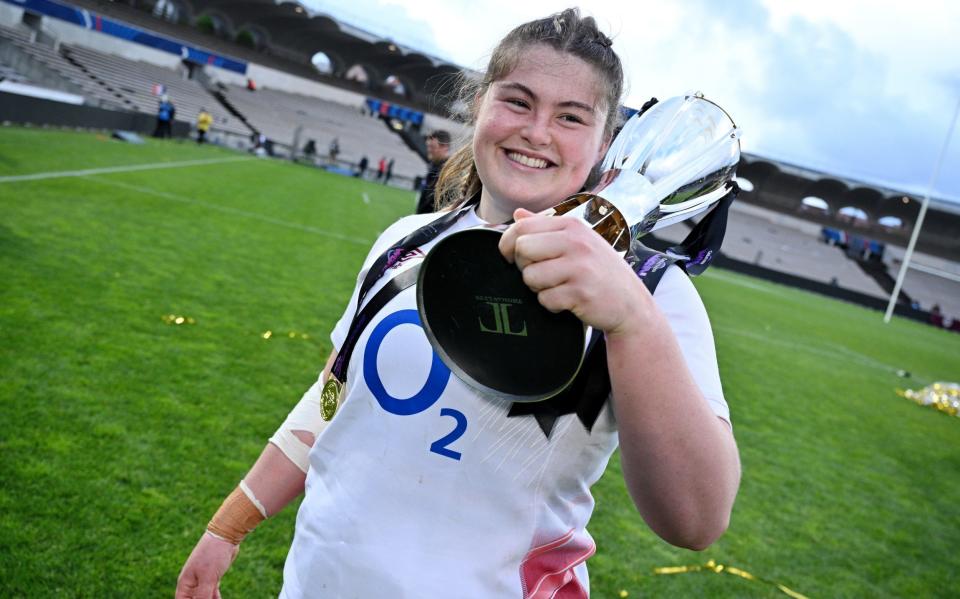
4. Madoussou Fall (France)
The towering second-row is the beating heart of France’s pack. Her lock partnership with Manaé Feleu has the ability to be world-class and her leg-busting carries gave France the go-forward for Gabrielle Vernier’s score in Bordeaux. There is still a gulf between the English and French packs – the Red Roses are simply bigger and better conditioned – but in Fall the difference is hardly noticeable.
5. Zoe Aldcroft (England)
Applied herself with the same industriousness across the Red Roses’ victorious campaign and never ran out of steam. Her 77th-minute break against Ireland at Twickenham – after getting through a whole body of work – was just ridiculous.
6. Aoife Wafer (Ireland)
In 21-year-old Wafer, Ireland have a future star. She nabbed a maiden international try on her first start against France and repeatedly showcased her raw strength to get over the gain-line. A steely carrier, she is still finding her feet at this level but her growth has been impressive.
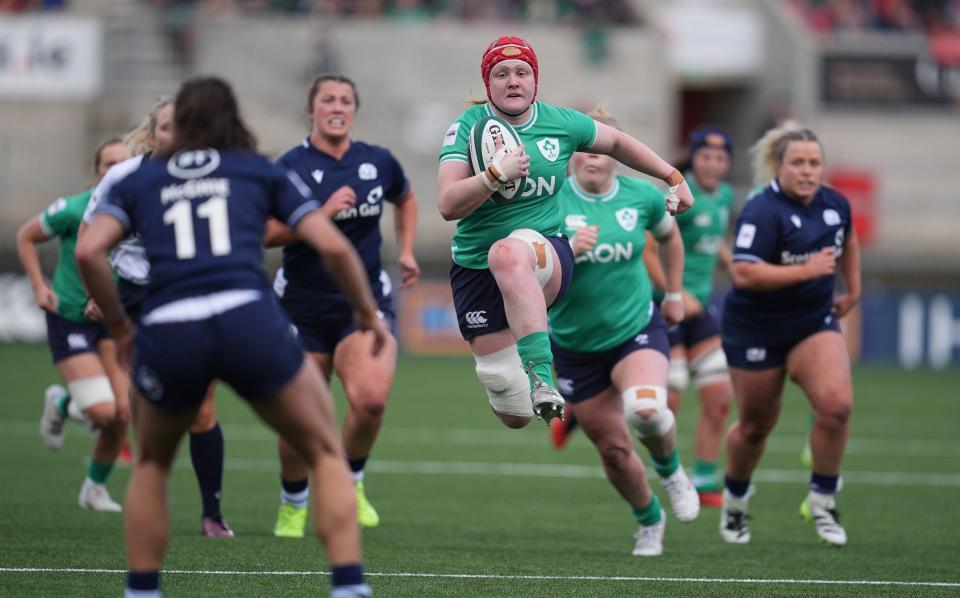
7. Evie Gallagher (Scotland)
Gallagher is the only Scotland player who makes our team. She is a No 8 but slots in at openside because of Alex Matthews’ dominance in the position – with her fierce jackalling ability and industriousness at the breakdown warranting her inclusion. Future captain material.
8. Alex Matthews (England)
A world-class operator, there is simply nobody else at Matthews’s level. England’s Miss Consistency is yet to have a bad game in a white shirt and she saved her best until last against France in a deserved player-of-the-match performance, crossing twice and coming up with a huge second-half turnover that dented France’s energy. A balanced runner, she has every tool in the box.

 Yahoo Sport
Yahoo Sport 






































